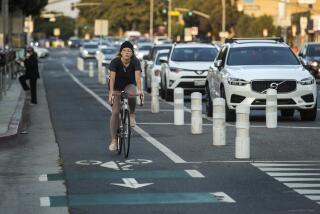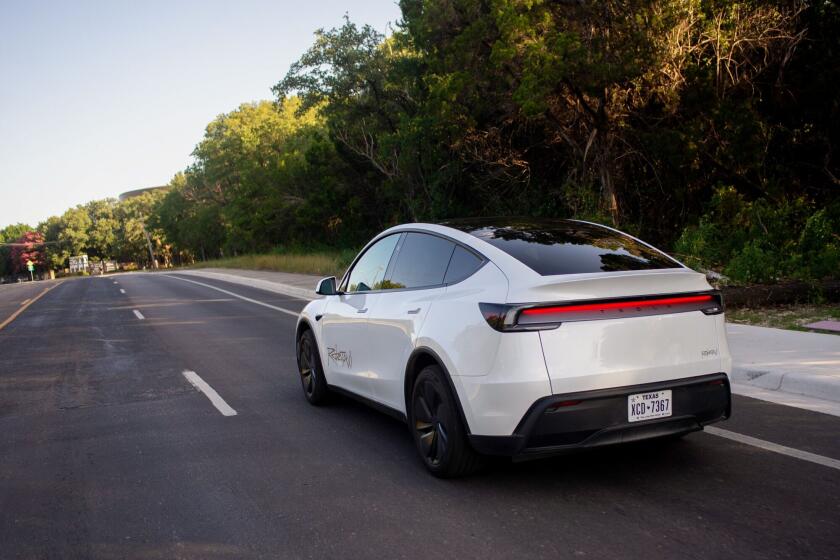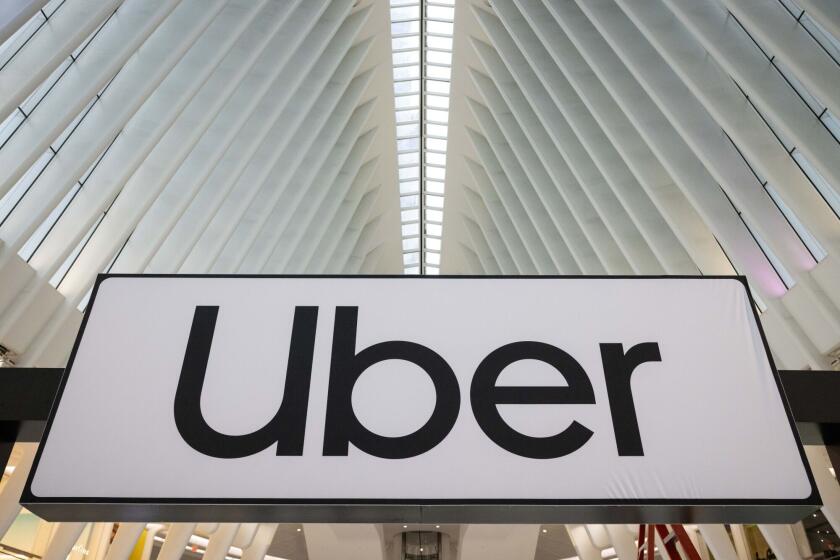One-way called right way to go for boulevards
- Share via
Converting Olympic and Pico boulevards into one-way streets from downtown Los Angeles to Santa Monica could increase capacity on the roads by up to 20%, according to a county transportation study to be released today.
The finding by a traffic engineering firm represents the first solid evidence that the conversion idea could reduce congestion. But the idea still faces an uphill battle at Los Angeles City Hall, in part because some residents fear that the change would increase cut-through traffic in neighborhoods between the streets.
The report, commissioned by Los Angeles County Supervisor Zev Yaroslavsky, a one-way proponent, is meant to be the first step in what will be a yearlong examination of whether the concept could work.
Traffic engineers who studied commuting patterns on Olympic and Pico found that about 106,000 cars a day use the corridor. They also studied a traffic configuration in which Pico would go west only and Olympic east only.
Vehicle capacity could increase by 20% with one-way streets and no left turns, the study found. It was conducted by Allyn D. Rifkin, a transportation planner and engineer.
A less restrictive alternative, which would allow left turns, would increase vehicle capacity by nearly 6%.
“We need to do something specific and we need to do it now,” said Yaroslavsky, who added that if the Olympic-Pico street conversion worked it could become a prototype for other major thoroughfares.
He and other proponents argue that the one-way idea could be implemented at a much lower cost than the billions of dollars that have been estimated for a Wilshire Boulevard subway or for freeway widenings.
Driving along one-way streets is quicker than most two-way streets because traffic signals can be better synchronized and turning vehicles don’t have to cross oncoming traffic.
Motorists, however, might have to drive a little farther to reach their destinations and might cut through residential areas, the report found.
The Los Angeles Department of Transportation has “done all the things that traffic engineers do in the traditional sense,” said Rifkin, who recently retired as a Los Angeles city traffic engineer. “But still, congestion is so bad, it’s important to think outside the box.”
But persuading other officials -- and residents -- could prove difficult.
Gloria Jeff, general manager of L.A.’s Transportation Department, rejects the concept on its face. City engineers believe that “cut-through streets would not be consistent with the neighborhood’s desired quality of life,” she said.
But Councilman Jack Weiss said he planned to ask the City Council on Tuesday to direct Jeff to analyze the report, which he called “a very constructive and thoughtful first step” toward addressing east-west traffic congestion.
“The point of this report is to generate questions and comments,” said Weiss, who is creating a task force of residents, business owners and others to examine the potential effect of one-way streets on the area. (Yaroslavsky said he would post the study today on his website, zev.lacounty.gov.)
The study examined extending the one-way streets from downtown Los Angeles into Santa Monica, but some possible constraints exist. Santa Monica, for example, has built raised landscaped medians that divide the thoroughfare.
Pico between Vermont and Western avenues appears too narrow to accommodate the proposed seven lanes across, the report said. Olympic also cuts through Beverly Hills, which would have to sign on to any one-way plans.
Under the proposal, Olympic and Pico would each be seven lanes -- five for mixed-flow traffic and two contra-flow lanes reserved for buses, vanpools and emergency vehicles during peak hours.
That way firetrucks and ambulances would have a passing lane to get around stopped or broken down buses without entering oncoming traffic.
Contra-flow lanes could be opened up for curbside parking and all vehicles during non-peak hours, the report said.
Costs, which are expected to be millions of dollars, may increase if residents of adjacent streets demand traffic-slowing devices such as speed humps and stop signs.
Shannan Bunch, who has lived in West Los Angeles for six years, opposes the creation of one-way streets.
“I think it’s a terrible idea,” she said. “It would just make trouble, especially on weekends when there is less traffic.”
But Jay Handal, president of the Greater West Los Angeles Chamber of Commerce, said business owners could not afford to fight the plan. Traffic congestion is driving away customers, Handal said.
As for residents’ complaints, he suggested that opponents count how many speed humps and four-way stops have been installed on their streets to combat existing cut-through traffic.
“The subway to the sea is a wonderful thing,” Handal said. But “the gridlock is now.”
More to Read
Sign up for Essential California
The most important California stories and recommendations in your inbox every morning.
You may occasionally receive promotional content from the Los Angeles Times.












